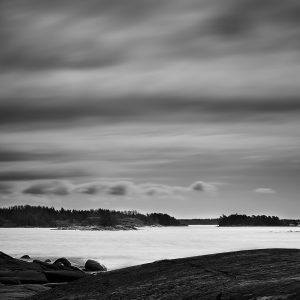
Everything should be made as simple as possible, but not simpler.
Albert Einstein
As you might rightly conclude from the quote, I am not quite done yet with the topic of simplicity. This time, though, I want to talk about it in the context of process.
Process in photography comprises of many things. In landscape photography it includes choice of location and time, the equipment that is used and how it is used but also how the captured results are further processed. In some ways the process defines the photographer.
There is a well-known example for this. Photographer extraordinaire Sebastiao Salgado used for many years exclusively the traditional darkroom analog process and high-contrast film. During his work on his Genesis project, though, he ran into problems getting or carrying enough film to remote locations. After some back-and-forth he agreed to use a digital camera, but only after his assistants were able to provide him with a method that closely simulated the results of analog process. This method involved a quite convoluted way to prepare the photos on the computer and to print them with inkjet printers on negatives. These negatives were then again printed in the analog way in the darkroom. He certainly didn’t use this (also quite costly) method just for the fun of it. There seemingly was just no other way to maintain the “Salgado-look” in transition to a digital workflow.
As part of their quest for a personal style, some photographers go the opposite route and revert back to the analog process and use awkward devices like view cameras in a more deliberate approach to working. In the same way as audiophiles’ claim a richer tone in analog records, these photographers swear that silver gelatine prints made from film negatives contain subtle tones that can’t be achieved by digital process.
Still, I am an unashamedly digital photographer. I couldn’t imagine dealing with analog film or chemicals even though I am aware that some of my pictures could visually benefit from an analog process. But I have so long worked with computers (and digital cameras are computers) that they are the tools I feel most comfortable with and therefore they don’t get in my way while working. That outweighs for me any theoretical advantages other processes might have. Unfortunately, that doesn’t mean that my process isn’t intricate in its own ways. From start to finish, that is from going to a location to a good print, I might spend days of work on a single photo. If there is a way to achieve the results I am seeking quickly, easily and cheaply I haven’t found it yet. Therefore visions of a simpler process always linger in the back of my mind. But this might be foolish and in vain.
I remember once having a cup of tea together with a colleague in a hotel in Tokyo. When the formally dressed waitress served the tea, she did it with deliberate, slow movements creating a small ritual from the moment. My colleague became rather impatient during the process but I sat there simply mesmerized. This ritual not only expressed reverence for the tea and the guest, but had so many overtones of honed social interaction and civility that they seemed to enrich the taste of the drink itself. I then understood that mere effectiveness, oversimplification of process, endangers richness of experience. In order for something valuable to arise there often have to be these subtle overtones, something that lingers like the complexity of a good wine. While the material for a photograph, the scene and the light, may lie before me, introducing these overtones comes from the treatment of the material, from “spilling my mind and heart” over it. And that can’t be rushed.
Therefore, Einstein’s “but not simpler” seems to me like a warning both for my photography and for life. Some things we simplify at our own peril. Process matters.